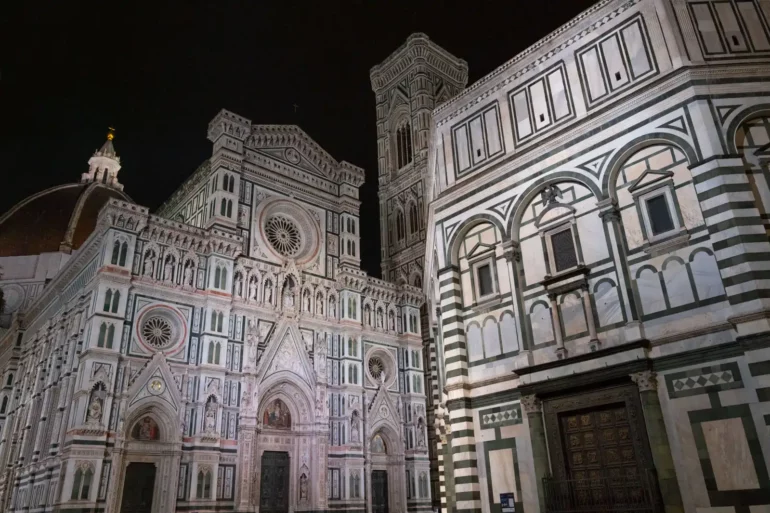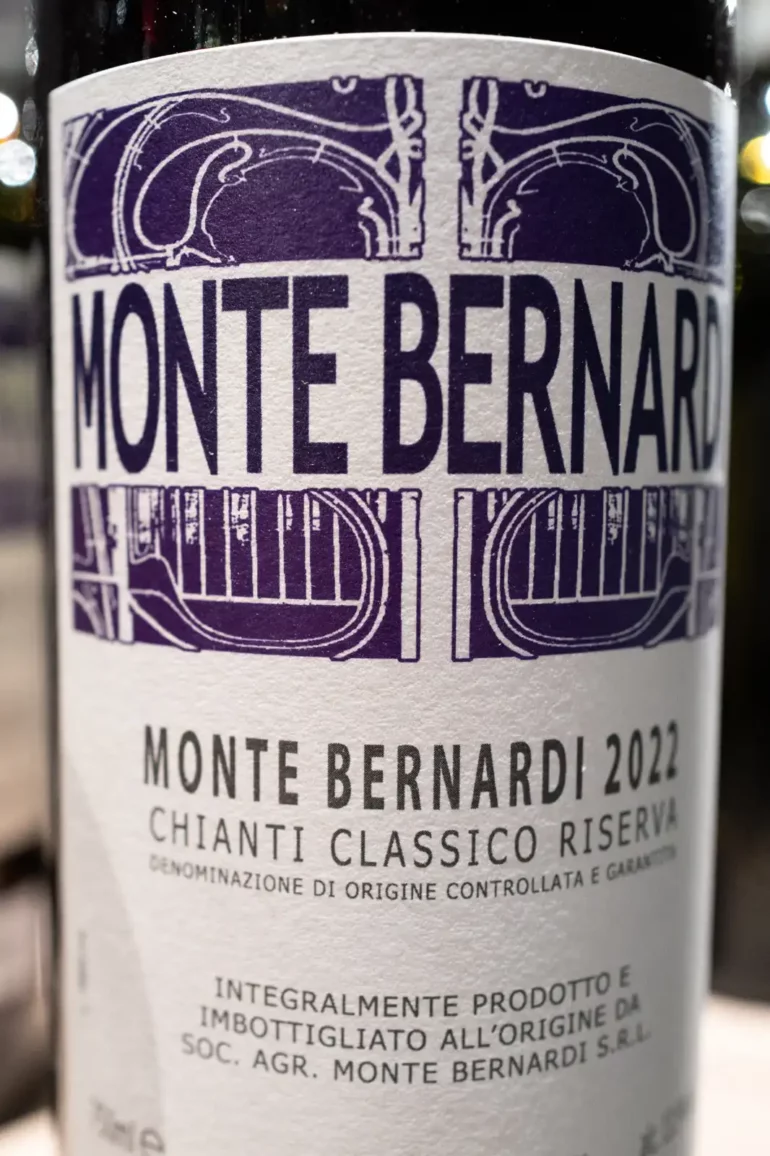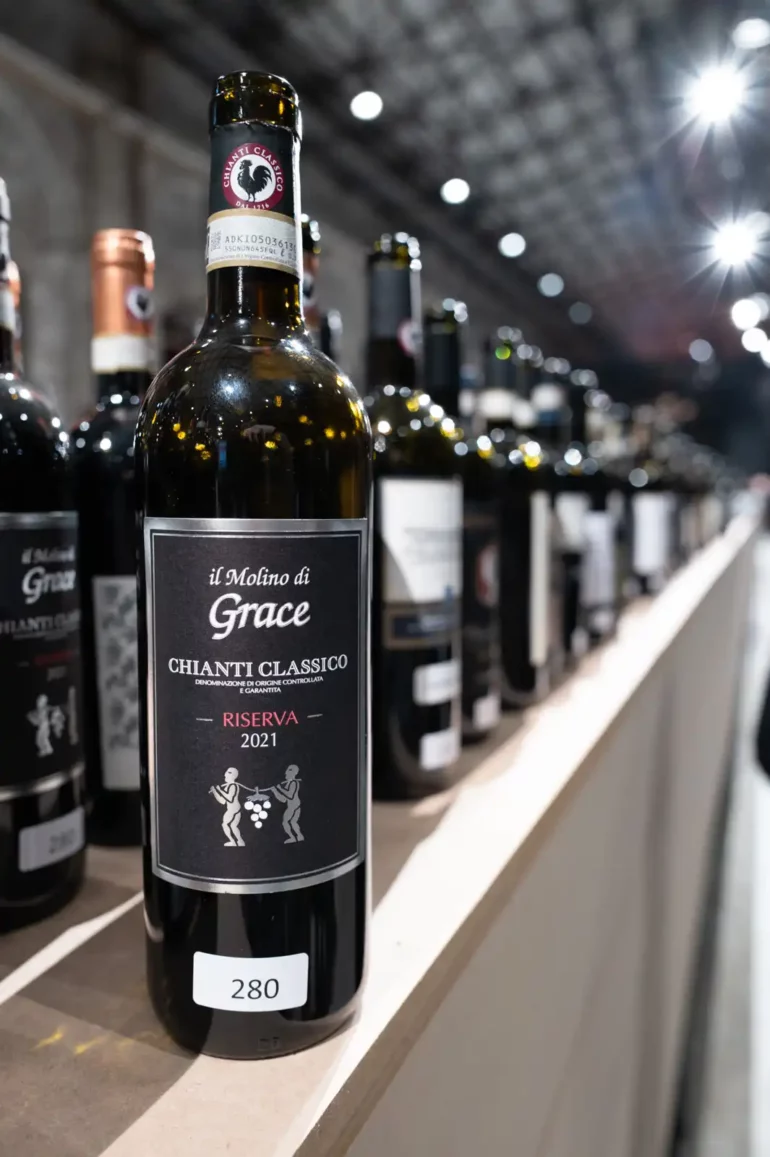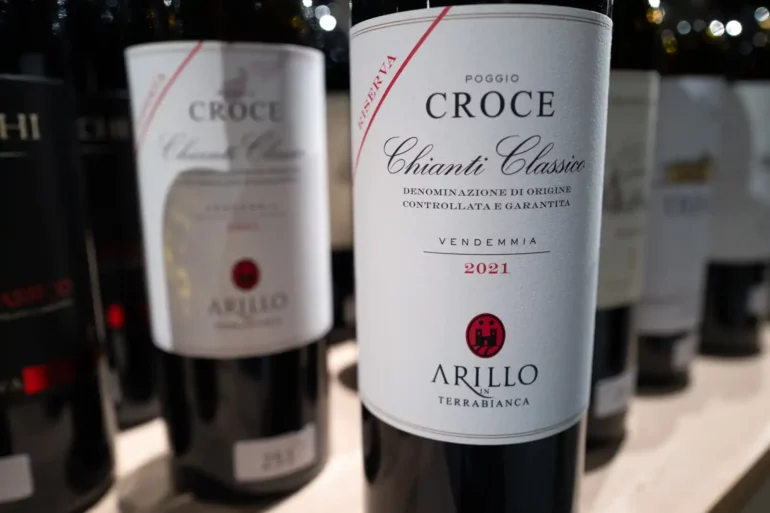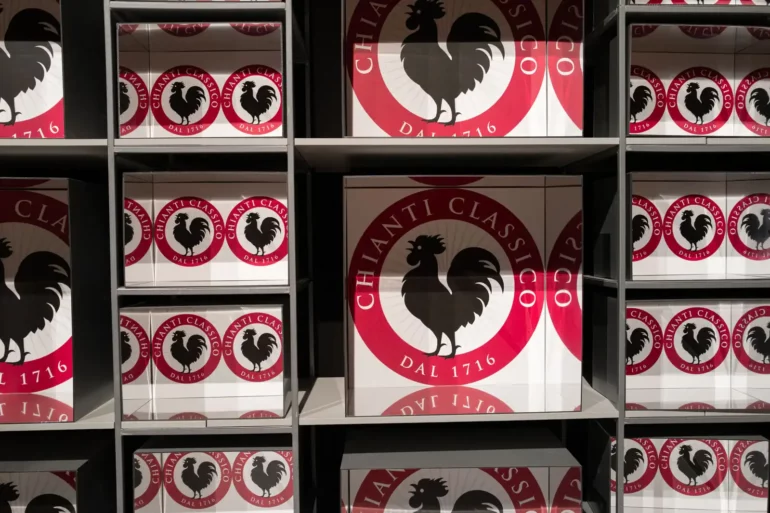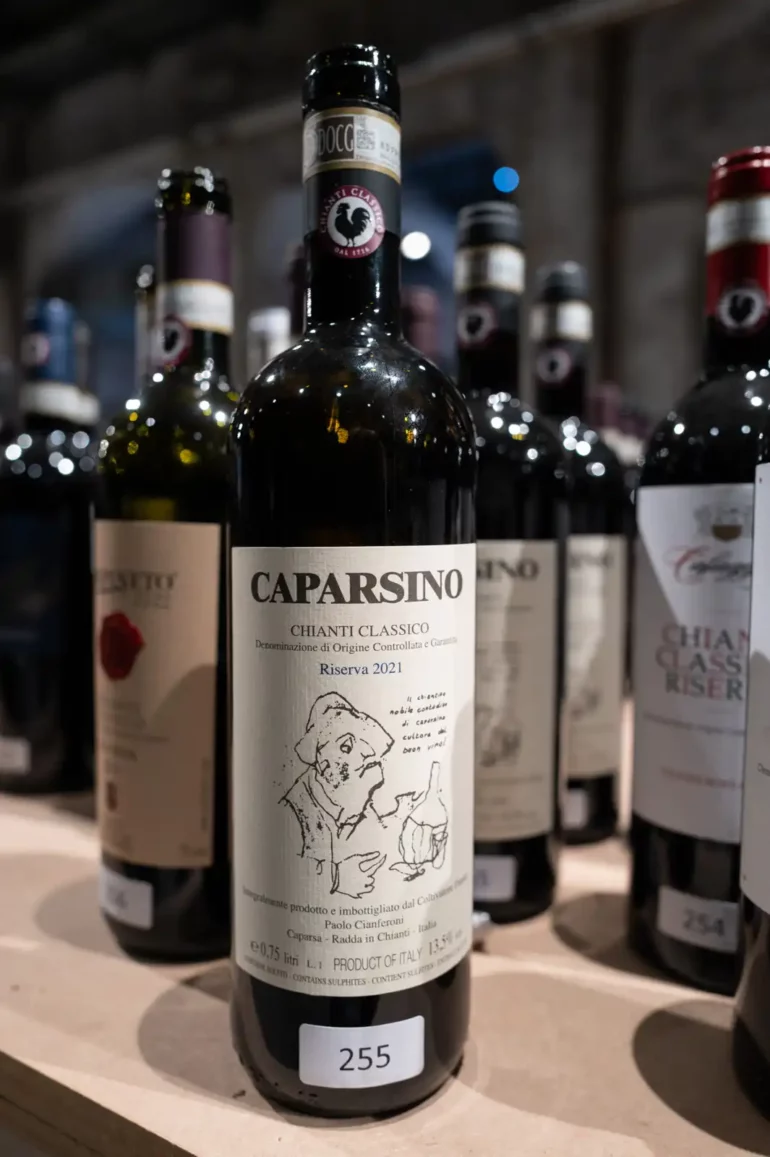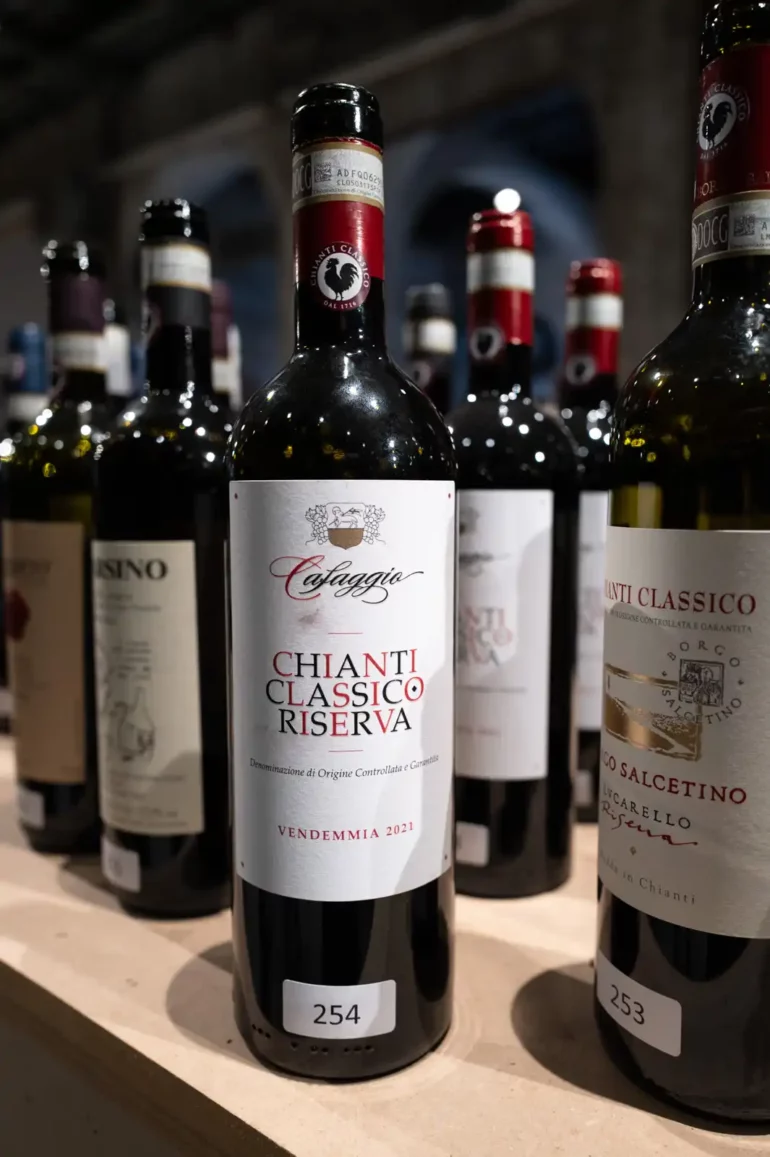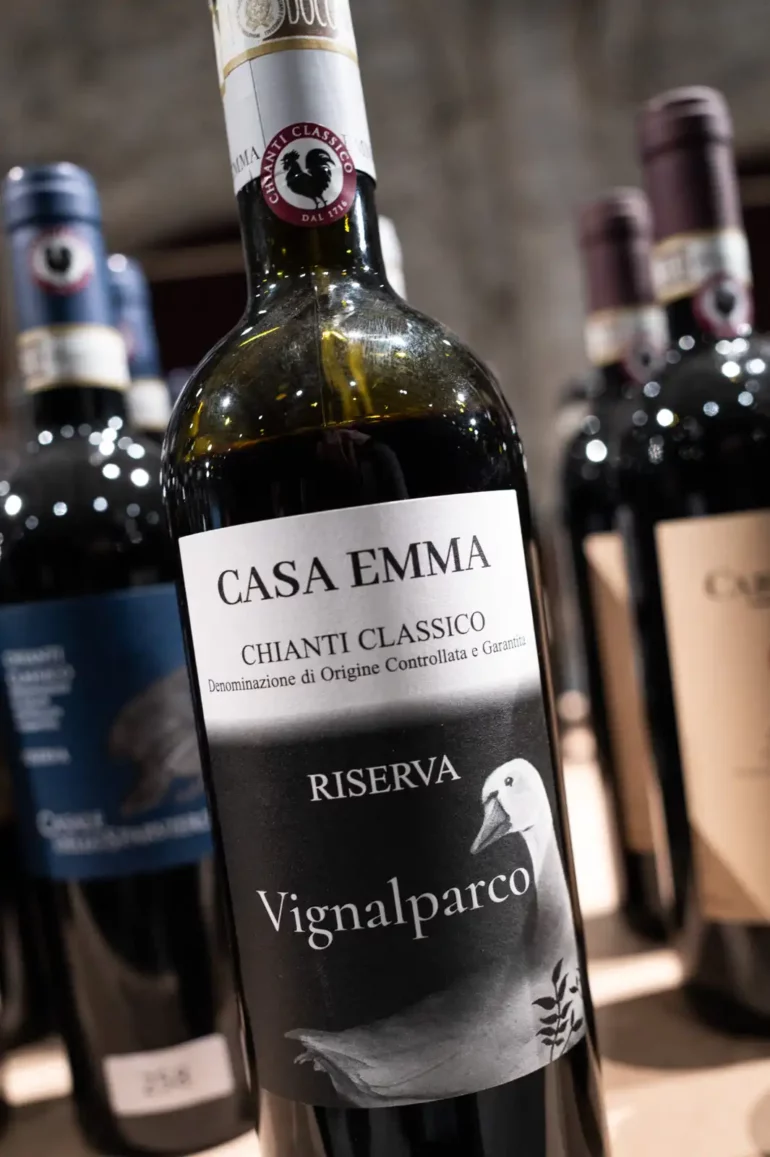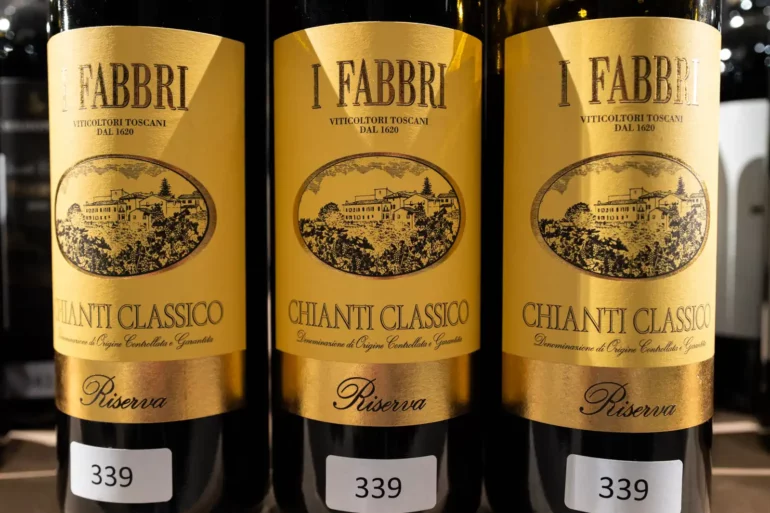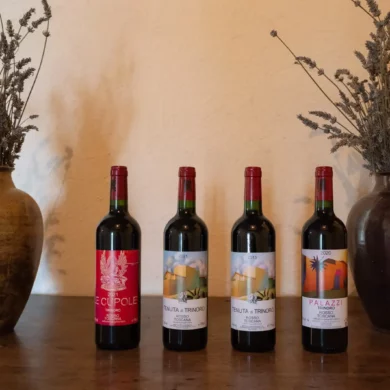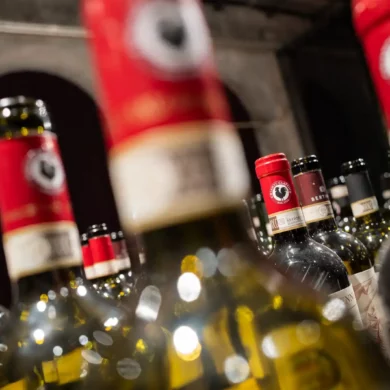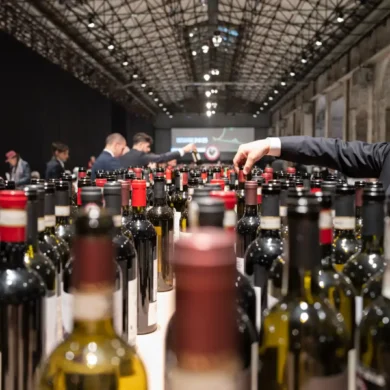At this year’s Chianti Classico Collection, I spent ample time surveying the Gran Selezione category, as one should. They are now rightfully the top wine of the region (for those who make them) and they are beginning to celebrate the singular terroir of their origins better with each vintage. But what about the age-worthy Riserva wines that no longer grab the headlines? Are they a “middle wine” or do they still have a rightful place toward the top of the lineup? And if so, how is the context for buying, ordering or serving one any different than the Gran Selezione?
This last question has long been one of the stumbling blocks to how producers have set up the three categories of Chianti Classico, beginning in 2014 when the Gran Selezione was unveiled. All across Italy, the word riserva carries authority — it is always an age-worthy wine whose release has been held back to allow for more maturity. And that’s the case here, too, it’s just not the top, top wine. Riserva are allowed to have a lower percentage of Sangiovese (80% vs. 90%) which allows for more blending of old-school favorites Canaiolo, Colorino and Ciliegiolo, as well as international favorites Merlot and Cabernet Sauvignon. They also cannot use the UGA village on the label, so wines that blend plots from around the greater DOCG can be filed as Riserva. There is also a lower aging requirement (24 months vs. 30), although for the producers I’ve talked with, this is rarely the tipping point on deciding which category to pursue for their wines.
You can see the issue: to describe the differences between the two, I needed a whole paragraph. Do you, as a consumer, need to sweat these details? No, not at all. Simply put, the context for buying, ordering and serving Gran Selezione versus Riserva is the same. And if you know who’s who and which wines consistently perform, you can find great value by buying a Riserva.
Navigate This Chianti Classico Riserva Guide (A to Z)
Several wines earned top marks, but I am calling out my three favorites — somehow, all from Panzano — with a “Top wine” callout.
- 2021 Arillo in Terrabianca “Poggio Croce” Chianti Classico Riserva
- 2020 Bindi Sergardi “I Colli” Chianti Classico Riserva
- 2021 Cafaggio Chianti Classico Riserva
- 2021 Caparsa “Caparsino” Chianti Classico Riserva
- 2021 Casa Emma “Vignalparco” Chianti Classico Riserva
- 2020 Casina di Cornia “Vigna la Casina” Chianti Classico Riserva
- 2022 Castello di Volpaia Chianti Classico Riserva
- 2020 I Fabbri Chianti Classico Riserva
- 2021 Il Molino di Grace Chianti Classico Riserva
- 2022 Monte Bernardi Chianti Classico Riserva
10 Best Chianti Classico Riserva
Top Wine: 2022 Monte Bernardi Chianti Classico Riserva
My good friend, and Opening a Bottle contributor, Scott Thomas is currently at Monte Bernardi hosting a wine immersion trip with his wine school. He put this Panzano estate on my radar over a year ago, and I truly love the supple nature of winemaking Michael Schmelzer’s Chianti Classico wines (the 2022 annata will be featured in that report as well). The aromas on the 2022 Riserva (★★★★★) are evocative: smoky, woodsy, fruity, and tinged with a savory note akin to soft leather. On the palate, the Riserva is gentle, juicy and generous. It really doesn’t lose sight of its smoky dimensionality, and leaves the palate with a cleansing sense for citrus. Coarse cotton tannins lend grip. Schmelzer constantly impresses with his finesse, but I think the 2022 Riserva is the best wine I’ve had from him yet.
Top Wine: 2021 Il Molino di Grace Chianti Classico Riserva
Taking the first half of its name from an historic windmill on the property (and the second half from the surname of its founder, Frank Grace), Il Molino di Grace lies just on the other side of a forest from Monte Bernardi. Nearby, Fontodi completes the Panzano trilogy: three excellent wineries, but each with their own perspective. Whereas Monte Bernardi often feels generous, and Fontodi buttoned up and proper, Il Molino di Grace comes across as a free spirit. The estate’s 2021 Riserva (★★★★★) offers exception purity of Sangiovese, with balanced yet typical notes of Chianti Classico. The cherries, the orange peel, the incense and leather all hit in the right way, never usurping one another. But it’s the forthcoming acidity and fine-grained, yet softened tannins that really run free. I loved this wine’s idea of potency. I suspect it’s drinking at its peak right now, but that the peak could last for another 10 years.
Top Wine: 2021 Cafaggio Chianti Classico Riserva
Cafaggio is a very small estate, and in fact, this was my first time tasting their wines, let alone learning about them (thanks to my table mate, sommelier Jason Yamasaki, for the tip). Located on the northwestern edge of Panzano, this estate’s 2020 “Basilica Solatio” Gran Selezione ranked highly in my report as well. The standard-bearer 2021 Riserva (★★★★★), however, was simply awesome, with dense cherry and pomegranate tones, a deep note of red tea running through the aromas, and considerable minerality through the finish.
It wasn’t until I reviewed all of my notes later that I realized three things: all three of my favorite Riserva wines were from Panzano, all three were more than 90% Sangiovese, and they all exclusively came from fruit inside the Panzano UGA. It underscores that (a) there still lies some confusion on what ought to be Gran Selezione and what ought to be Riserva, and (b) perhaps the Riserva category should be allowed to display the UGAs on the label when they qualify. Either way, as noted before, consumers should see the context for buying one or the other as the same.
2021 Casa Emma “Vignalparco” Chianti Classico Riserva
This was my first time tasting the wines of Casa Emma, again a recommendation from sommelier Jason Yamasaki. The San Donato in Poggio estate is small, but has been around for a while (est. 1969) … at least compared to many Chianti Classico peers. One-thousand olive trees are planted across the estate, which is 90% surrounded by forest. The domestic goose on the label of the 2021 “Vignalparco” (★★★★★) is a tribute to the flock that grazes in this vineyard. They’re voracious appetite for bugs and grasses eliminates the need for chemical controls.
What was so interesting to me with this wine was the savory dimension, which seemed more iron-rich than others. Cherries, orange zest, cardamom spice and rays of brightness countered this stern note, lending the wine exceptional tension.
2021 Caparsa “Caparsino” Chianti Classico Riserva
Caparsa’s winemaker, Paolo Cianferoni, is a central figure in one of the chapters in my forthcoming book, Opening a Bottle: Italy, due out this fall. When I visited him in 2022, we spent a great deal of time taking about his family’s mezzadri roots — they were sharecroppers. This heritage is still very meaningful to him, and his pretty, idyllic Radda estate, Caparsa, still practices polyculture. For Paolo, wine is a food: it should complement other flavors, enhance dinner table experiences, and even nourish the body.
That spirit is found in his 2021 “Caparsino” Riserva (★★★★★). The ample cherries and orange peel aromas are complemented by something like incense. With its soft-spoken and delicate presence on the palate, the wine seems not only evocative but pure. Cotton tannins lend a nice sense of structure.
2020 Bindi Sergardi “I Colli” Chianti Classico Riserva
Bindi Sergardi has three estates across Tuscany, two of which — Tenuta Mocenni and Tenuta I Colli — are in Chianti Classico. Each one has a Chianti Classico Riserva wine to call their own, but only Tenuta Mocenni has single-vineyard sites to produce Gran Selezione.
Tenuta I Colli lies in the Vagliagli UGA, a warm, southerly counterpart to the better-known Castelnuovo Berardenga UGA. The 2020 “I Colli” Riserva (★★★★★) is very aromatic, with a heightened sense of raspberry complimenting the cherry-like backbone. A strong aroma of fennel bulb stood out as particularly unique among the 30 Chianti Classico Riserva wines I tasted. Juicy, rich and mellow, with nice minerality and a beautiful finish lingering with superb persistence.
2021 Arillo in Terrabianca “Poggio Croce” Chianti Classico Riserva
This wine from Arillo in Terrabianca made the list last year, too. I praised the 2020 for its “lithe texture, racy acidity and fine-grained tannins.” The 2021 “Poggio Croce” (★★★★ 3/4) is a bit of a different story: there seems to be more flesh to the fruit, and a looser structure with coarser tannins. However, that only seems to pry open up the wine more immediately. Sour raspberries dominate this nose, along with orange citrus and wild savory tones. Yet after all of that, the wine still seems soft-spoken and amiable. This is not a heavy hitter, nor does it need to be.
2022 Castello di Volpaia Chianti Classico Riserva
Castello di Volpaia’s vineyards benefit from their high elevation. Because of this, it is one of the “most Radda” of Radda’s estates: you reach for a Burgundy glass instead of Bordeaux stemware with Volpaia.
The aromas are so distinctive and majestic with the 2022 Riserva (★★★★ 3/4) — the cherry-like fruit has considerable freshness for a Riserva, with accents of church incense, flowers and mint complimenting that core. Where the wine hits its marks most as a Riserva is on the palate, where that soft fruit seems to get deeper, and where the acidity has an almost creamy feel to it. By the time the finish arrives, there is no doubting this wine’s complexity. An arresting wine of great elegance.
2020 Casina di Cornia “Vigna la Casina” Chianti Classico Riserva
Years ago, before I even started a blog that would become this publication, my wife and I fell in love with a boxed wine. Judge all you want, but damn was this Sangiovese from the heart of Tuscany good. Fresh cherries, hints of rosemary, leather, tiny tannins, and because it was in a box, it stayed fresh for a good two weeks. I have no shame in recalling this memory. For everyday drinkers not obsessed with this subject matter, that kind of boxed wine is an exceedingly good value, and its quality spoke to the fact that the vessel isn’t the problem. More boxed wines should be that good.
The wine was made by Casina di Cornia, a small, family farm in Castellina in Chianti. It seems like the wines from this Chianti Classico UGA are always a celebration of fruit, and I was reminded of that tasting the 2020 “Vigna la Casina” Riserva (★★★★ 3/4). I was also reminded of that boxed wine, some 12 years later, because the fresh cherries, soft rosemary and hints of leather were all exactly there (as were notes of baking spice and firmer tannins). The brain’s ability to store away aromas and flavors, and recall the memories tied specifically to them, never ceases to amaze me. It’s one of my favorite things about wine.
The “Vigna la Casina” is remarkably fresh, so much so that it almost seems more like an annata wine. But the firm tannins and a dimension of spice, do give it the necessary stature to justify the pursuit. This wine is in limited quantities stateside, but worth seeking out.
2020 I Fabbri Chianti Classico Riserva
In the glass, Lamole is Chianti Classico’s most recognizable village — an outlier of lean, delicate fruit resulting from the remote, high-elevation of its vineyards. Tasted in a lineup of other Chianti Classico wines, a glass of Lamole might seem shy and overwhelmed, but give it the proper spotlight and it is hard not to be dazzled. Susanna Grassi of I Fabbri helped me comprehend this beautiful, mountainous place during a visit in the spring of 2024. Her 2020 Chianti Classico Riserva (★★★★ 3/4) offers a superb duality by inhabiting the traits of Lamole perfectly while amplifying the endurance and complexity of Sangiovese. Again, this is a Chianti Classico best served in Burgundian stemware.
Note: My travel expenses to attend the Anteprima di Toscana were paid for by the governing body of the event. Learn more about my travel and editorial policy in producing this publication.


